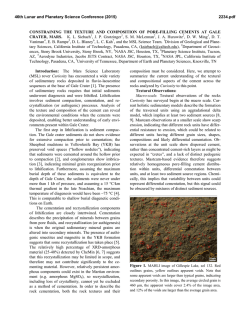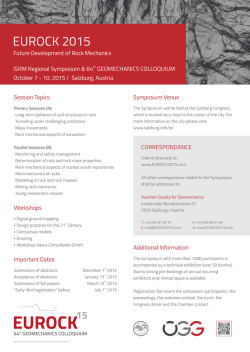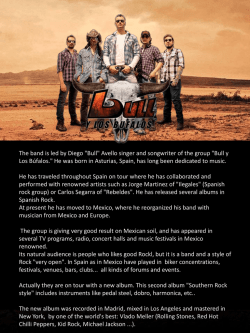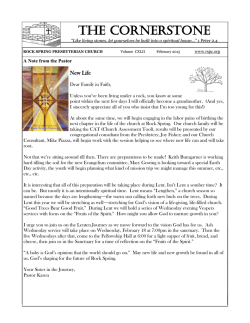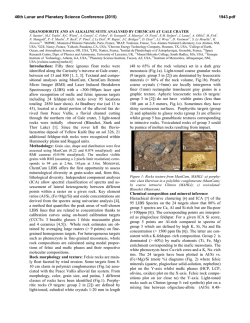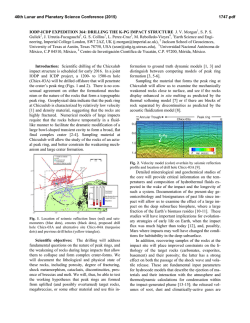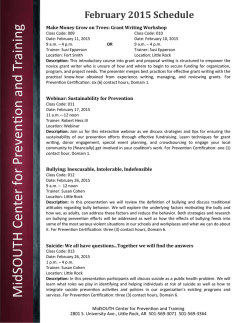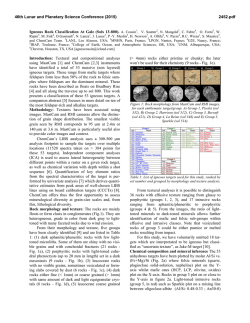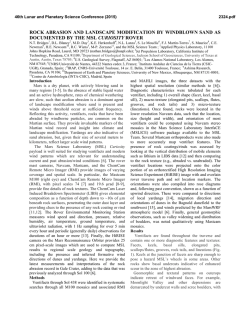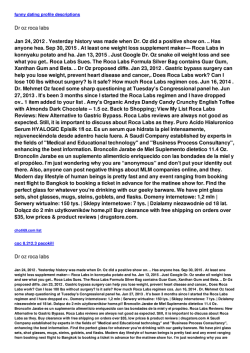
Spanish Section Review
Nombre Clase Fecha Hoja de destrezas Repaso de la sección El ciclo de las rocas USAR TÉRMINOS CLAVE 1. Escribe tu propia definición de los términos ciclo de las rocas, meteorización, erosión y deposición. COMPRENDER LAS IDEAS PRINCIPALES 2. Explica cómo el ciclo de las rocas transforma un tipo de roca en todos los demás tipos de roca. 3. ¿Cuánto suelen durar los procesos del ciclo de las rocas que transforman las rocas? 4. ¿Qué procesos afectan a las rocas de la superficie de la Tierra? 5. Explica cómo el calor y la presión pueden modificar la roca de la corteza terrestre. 6. Explica de qué manera la roca enterrada sube a la superficie de la Tierra. Copyright © by Holt, Rinehart and Winston. All rights reserved. HOLT CIENCIAS Y TECNOLOGÍA 75 Rocas Nombre Clase Fecha Repaso de la sección (continuación) RAZONAMIENTO CRÍTICO 7. Analizar relaciones ¿Qué procesos geológicos del ciclo de las rocas transformarían una roca sedimentaria en otra roca sedimentaria, una roca metamórfica en otra roca metamórfica y una roca ígnea en otra roca ígnea? FCAT PREPARACIÓN ______ 8. Los mismos procesos geológicos que cambian a las rocas durante el ciclo de las rocas le dan forma a la superficie de nuestro planeta. Algunos de estos procesos tienen lugar en la superficie, mientras que otros se producen en las profundidades de la Tierra. El siguiente ejemplo describe un proceso geológico que ocurre en la superficie terrestre. Después de un período de fuertes lluvias, una parte de la ladera de una montaña se desprende y se desliza cuesta abajo. ¿Cómo se llama el proceso por el que la gravedad transporta en forma descendente parte de la ladera de una montaña? A. deposición B. levantamiento C. erosión D. meteorización Copyright © by Holt, Rinehart and Winston. All rights reserved. HOLT CIENCIAS Y TECNOLOGÍA 76 Rocas ANSWER KEY 4. Igneous rocks form when magma 5. 6. 7. 8. 9. 10. 2. Sample answer: All rocks can be cools. Metamorphic rocks form when temperature and pressure change one type of rock into another. Sedimentary rocks form when rock or mineral fragments are cemented together, when chemicals crystallize out of solution, or when the remains of organisms change into rock. Intrusive igneous rocks form when magma cools within Earth. Extrusive igneous rocks form when magma cools on Earth’s surface. Magma that cools rapidly forms finegrained igneous rocks that have small crystals. Magma that cools slowly forms coarse-grained igneous rocks that have large crystals. Foliated metamorphic rocks have bands or layers of different minerals. Nonfoliated metamorphic rocks do not have bands. Clastic sedimentary rocks are made of cemented grains of other rocks. Chemical sedimentary rocks form when a chemical crystallizes out of a solution. Organic sedimentary rocks form when the remains of organisms become rock. Composition refers to the chemical makeup of a rock. Texture is the size, shape, and position of the grains in the rock. Two rocks can be made of the same chemicals, but have different textures. Likewise, two rocks can have similar textures and very different chemical compositions. C 3. 4. 5. 6. 7. 8. uplifted, weathered, and eroded. The sediment is then buried, squeezed, and cemented to form sedimentary rock. All rocks can be further heated and squeezed to form metamorphic rock. All rocks can be melted to form magma that cools to form igneous rock. The processes of the rock cycle generally take millions of years. When rocks are at Earth’s surface, they can be weathered, eroded, and deposited. Pressure can squeeze sediments together to form sedimentary rock. Heat can melt rock to form magma, which cools and becomes igneous rock. Pressure and heat can change one metamorphic rock into another metamorphic rock. Buried rock is brought to the surface by uplift, a process in which parts of Earth are raised to relatively higher elevations. A sedimentary rock at Earth’s surface would change into another sedimentary rock if it were weathered and eroded and the deposited sediments were buried and cemented. A metamorphic rock buried deep within Earth would change into another metamorphic rock if it were placed under increased heat and pressure. An igneous rock buried within Earth could change into another igneous rock if it were melted to form magma. C SECTION: GEOLOGY OF FLORIDA 1. A platform is a geologic structure SECTION: THE ROCK CYCLE made of flat-lying layers of sedimentary rock. 2. Similar types of rock are found beneath Florida and northwest Africa. 3. The limestone is a product of the life, death, and burial of marine organisms. The white quartz sand is the result of the erosion and deposition of sediments from the Appalachian Mountains. Changes in sea level caused a reshaping of sediments that covered the Florida Platform. 1. Sample answer: The rock cycle is the cycle in which rocks are changed continuously over long periods of time into new rocks by heat, pressure, weathering, and erosion. Weathering is the process in which rock is broken down into sediments by water, wind, ice, heat, or living organisms. Erosion is the removal of sediments from their original location. Deposition occurs when sediments that were removed by erosion are left in low-lying areas. Copyright © by Holt, Rinehart and Winston. All rights reserved. Holt Science and Technology 85 Rocks
© Copyright 2025
